Burma has always intrigued me and had been on my “must visit” list for many years. Sadly, events conspired against me and it was not until 2012 that I managed to visit the country for the first time. It exceeded all my expectations and I made a return visit in 2018, a visit which is the subject of this story.
I am taking a risk with this story. The very mention of Myanmar, as Burma is now known, rings alarm bells for many people. This is sad because, although the atrocities against the Rohingya people in North Myanmar are appalling and whilst those responsible should be strongly condemned, in my view, it’s also wrong to tag the whole 54 million population of the country with the same label.
Arguably Myanmar is the least well known and most misunderstood country in south-east Asia. It has had a very difficult history which continues today. The British colonised Burma in the 19th century and the familiar colonial pattern of paternalism combined with ruthless exploitation of the abundant natural resources followed.
Burma, during the period of British rule, was the wealthiest country in south-east Asia. It was the first country to produce commercial quantities of oil. Along with the oil, the British colonialist exploited teak and other timber products, tungsten and gemstones and, up until WW2, Burma was the world’s largest producer and exporter of rice.
The enormous wealth from this exploitation did not, of course, flow to the Burmese but instead went into the coffers of British companies in London. What was invested back into Burma was a pittance compared with what was taken out.
Although the British established Burma as a unified country, it was in fact far from unified and was an uneasy amalgam of more than 135 different ethnolinguistic groups whose differences have been manifested in numerous wars and civil conflicts. Even today, the country is riven by deeply religious, cultural and social differences and it has one of the highest levels of income disparity of any country in the world.
As the Japanese invaded Burma in the second world war, the retreating British forces implemented a scorched-earth policy, destroying most of the infrastructure and the mining and other assets including the very important fleet of riverboats — the dominant form of transport in the country.
So when Burma was hastily granted independence in 1948 the new government found a very bare cupboard — a dirt-poor country with very little infrastructure and an almost totally uneducated population.
Sadly, since independence, it has been a very hard road for the Burmese. A corrupt military clique ruled the country for many years and pursued a policy of isolationism and actively discouraged tourism. Economic advancement was very slow.
In an effort to encourage a transition to a more enlightened regime, western countries imposed severe economic sanctions on the country for many years. It is only when a nominally civilian government was installed in 2010 that the sanctions were lifted and the country opened up to tourism.
It was two years later that I made my first visit when I travelled on a riverboat down the Ayeyarwady River — formerly known as the Irrawaddy — from Mandalay to Yangon. It was a wonderful experience but, since then, more luxurious cruising boats have been introduced and the Mandalay to Yangon run is fast becoming overrun with tourists. I was fortunate to enjoy it when it was an un-destination.
This wonderful first experience and, in particular, the friendly, smiling Burmese had me wanting to go back to Myanmar — but in a setting well away from the tourist hordes. The ideal opportunity presented itself in 2017 when I had the chance to travel again on a small riverboat on a first “expedition”, visiting small towns and villages on the Ayeyarwady Delta in the south.
The expedition was actually in 2018 but to secure a place on the first exploratory sailing I had to make a booking and commit a year in advance. Unfortunately, in the intervening twelve months, the well-documented atrocities against the Rohingya people in northern Myanmar took place. Myanmar was well and truly back in the sin bin and the peace credentials of Aung Sun Suu Kyi — the Lady — were in tatters.
This left me in a dilemma. But, after considerable soul searching, I decided to carry on and make the trip because I realised my not going would only disadvantage the many local people who are now totally dependant on tourism for their livelihoods. They have absolutely no involvement with the atrocities in the north of their country. Indeed, most of them have absolutely no knowledge of any events outside their immediate locality.
The severe sanctions imposed by the western countries up to 2010 arguably hurt only the general population while the ruling junta’s army generals enriched themselves through sanctions-busting and trading with the less than scrupulous neighbouring countries.
So it was that in September 2018 I found myself again in Yangon — the major city of Myanmar, formerly known as Rangoon. What a difference six years makes. In 2012, the Yangon traffic had been light — just buses, minibuses, motorcycles, bikes and trucks and a few private cars. By 2018, the traffic was as bad as that in Bangkok, with thousands of private cars.
The majority are used vehicles from Thailand which the steering wheel is on the wrong side, something which doesn’t make for confidence. Thailand drives on the left — like Australia, New Zealand, the UK, India, Japan and Indonesia and many African countries. Myanmar drives on the right. However, this inconvenient fact does not seem to bother the Burmese drivers at all. They have cheap cars and for them, that’s all they care about.
There is also a building boom fuelled by Chinese money. Yangon has gone from quaint backwater to becoming a major Asian city in just a few years.
But soon I was on my way sailing away from Yangon as the small shallow draft riverboat putt-putted its way slowly across the rich delta — still the rice bowl of Myanmar. Deltas are flat and usually featureless and that is most definitely the case with the Ayeyarwady Delta. Dozens of small villages and just a few towns are scattered over the delta, with many accessible only by boat.
My riverboat called in on a few of them — at least one village or town per day — and the rest of the time we gently cruised down the channels, observing the river life, trying not to cut through the many fishing nets laid across the river or running down any of the many small boats plying back and forth.
If you go to Myanmar seeking dozens of temples, palaces, forts and historic buildings then the Delta is not for you. There are plenty of temples as every village has one, but who wants to come home with an SD card full of photos of temples?
For me, the biggest photo opportunities of the Delta are the wonderful people. I try, wherever possible, to gain consent from the people I am photographing. I manage to make my photographic intentions clear even if I don’t speak the local language and if the subject declines I don’t take their photo.
It’s easy and, suffice to say, I can remember only one single instance from this trip of someone objecting. I always try and show them the photo on the LCD screen and engage with them with a smile and a genuine thank-you after I have taken their image.
On this voyage, I visited villages which are very rarely, if ever, encroached on by tourists. Everyone was curious about me, particularly the children, so having a camera and taking photos of them was very well received. Seeing how deprived the people are — Myanmar is ranked by the UN as one of the least-developed nations in the world — it is always a surprise to me how apparently happy everyone is. There are smiling faces everywhere, and not just for my camera.
Myanmar is very hot and humid most of the year and March, when I visited, was no exception. Fortunately, we usually arrived late afternoon at a small town or village to tie up for the night and so I was able to photograph in the evening golden hour when many of the photos accompanying this story were taken.
I used my Leica Q and I was so glad that I had just the one camera with a fixed lens and that I was not carrying a huge camera bag full of kit which I spotted on an exceptionally hot and bothered tourist in Yangon. I do hope that he managed to take some exceptional photos because he was certainly suffering for his art when I saw him.
As a postscript to this story in September of this year, I was off to Myanmar again — this time to a really remote destination — but COVID-19 has intervened.

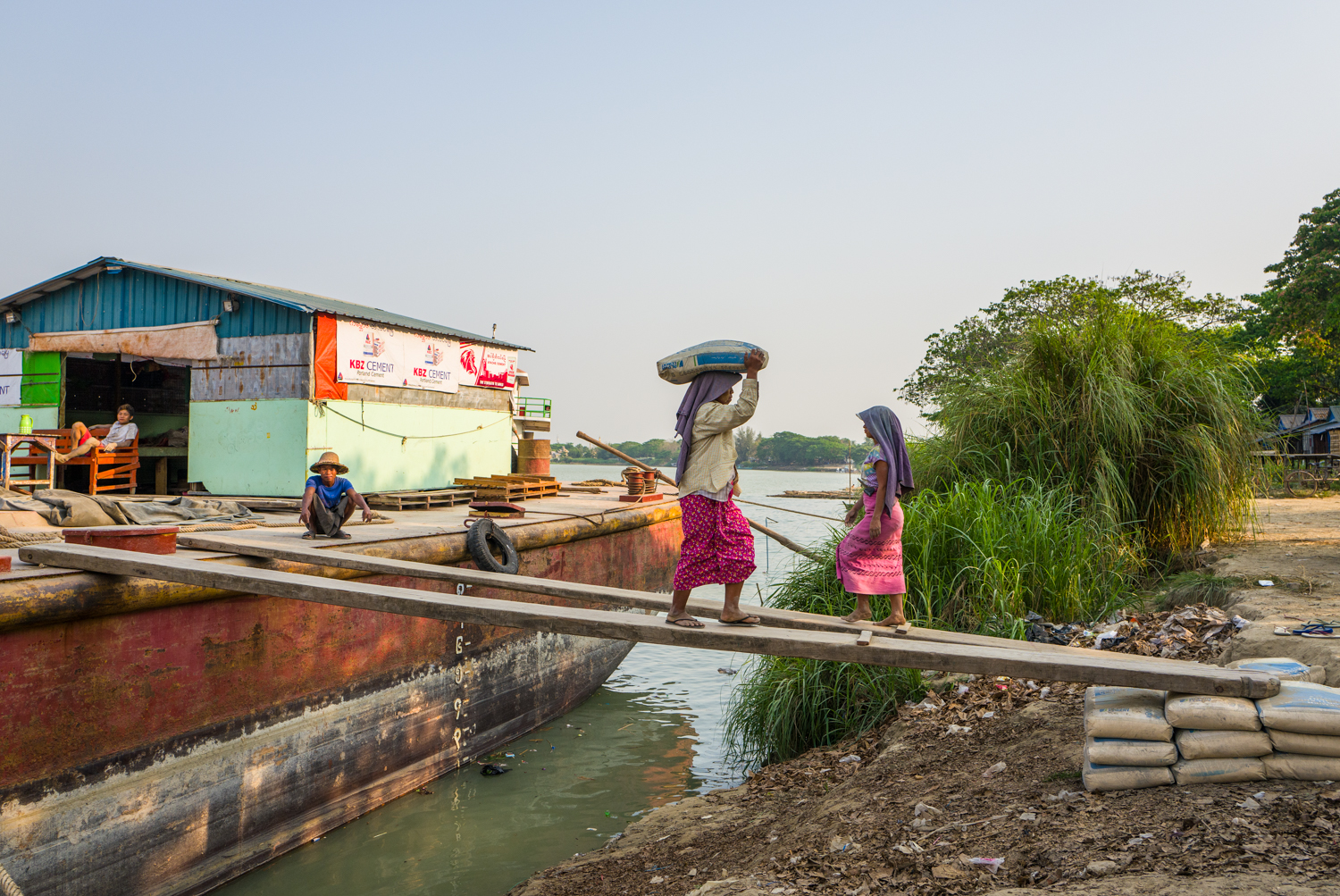
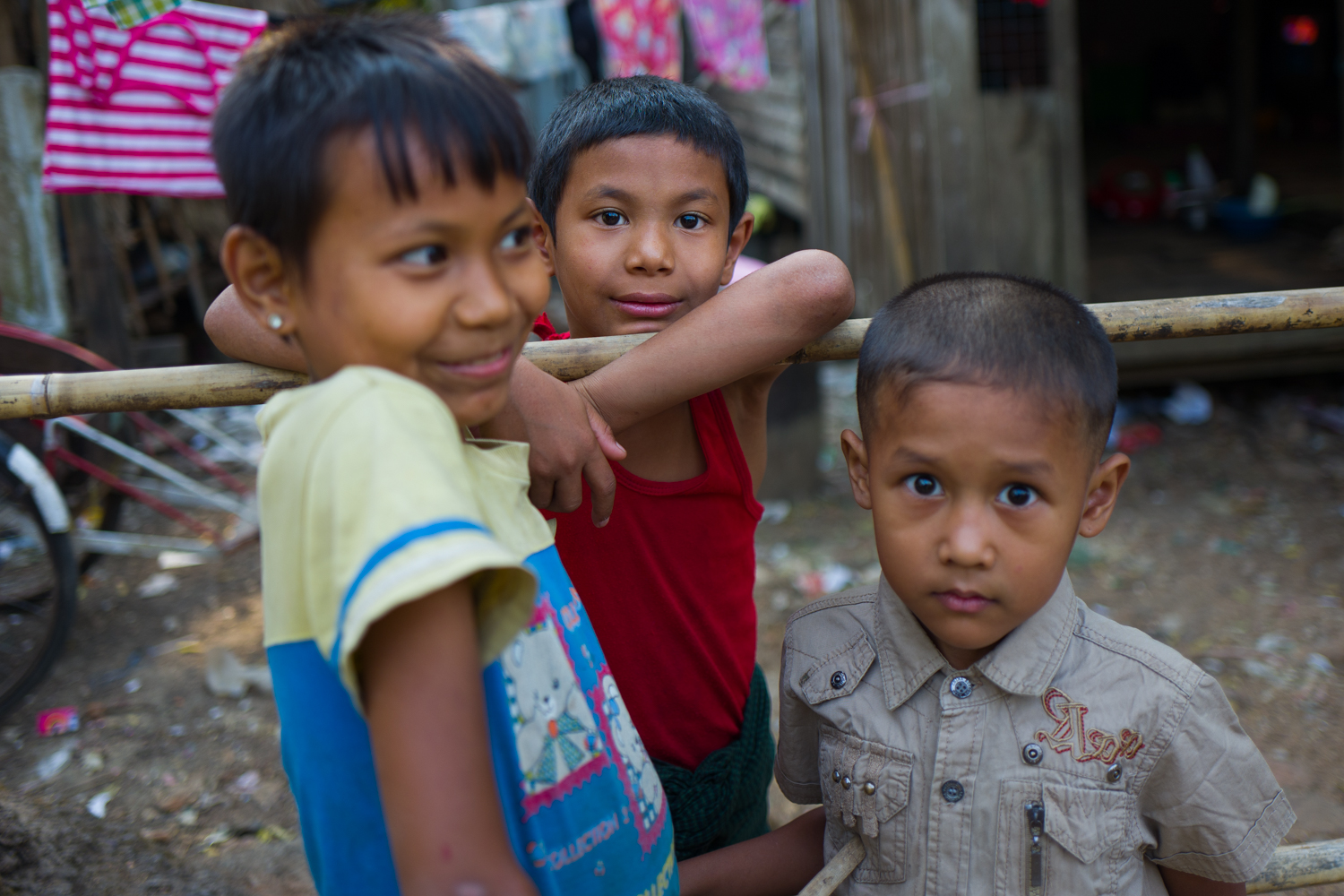
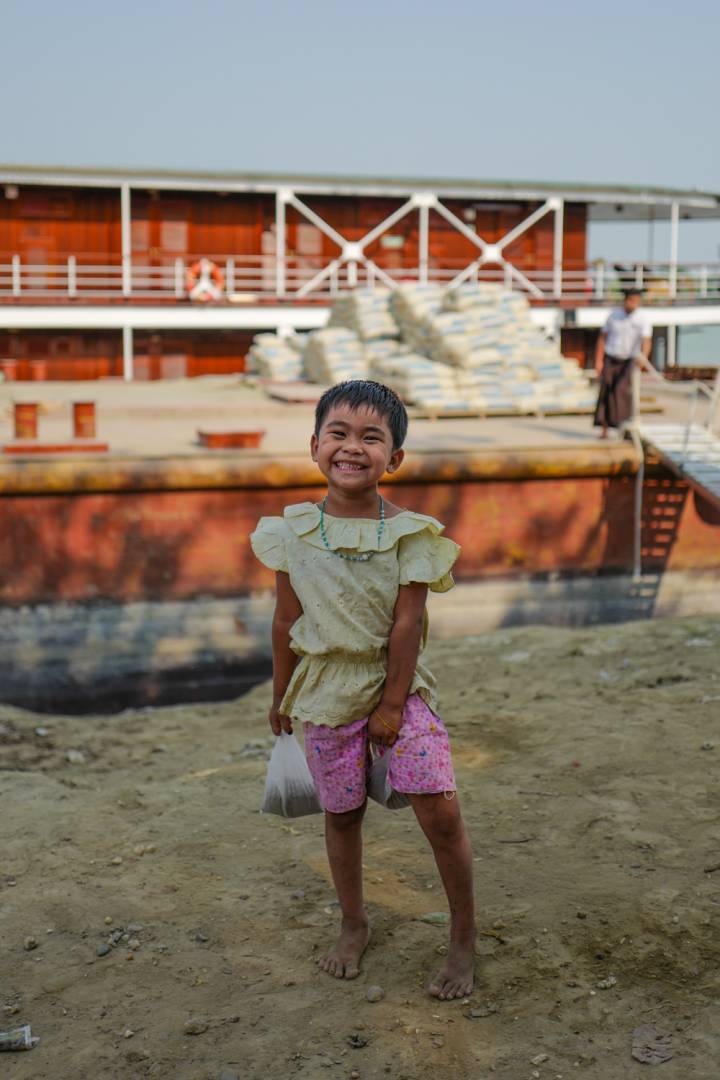

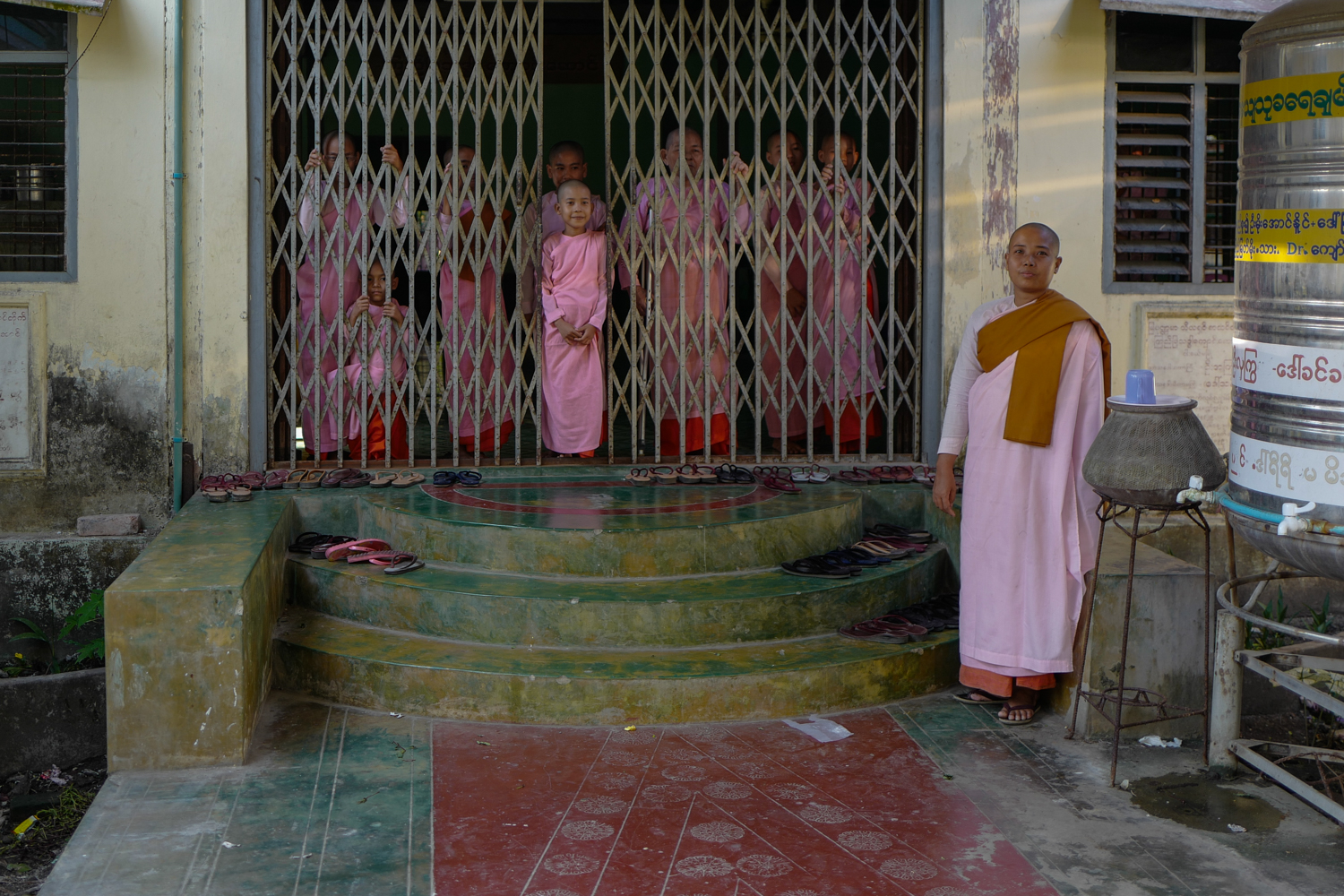
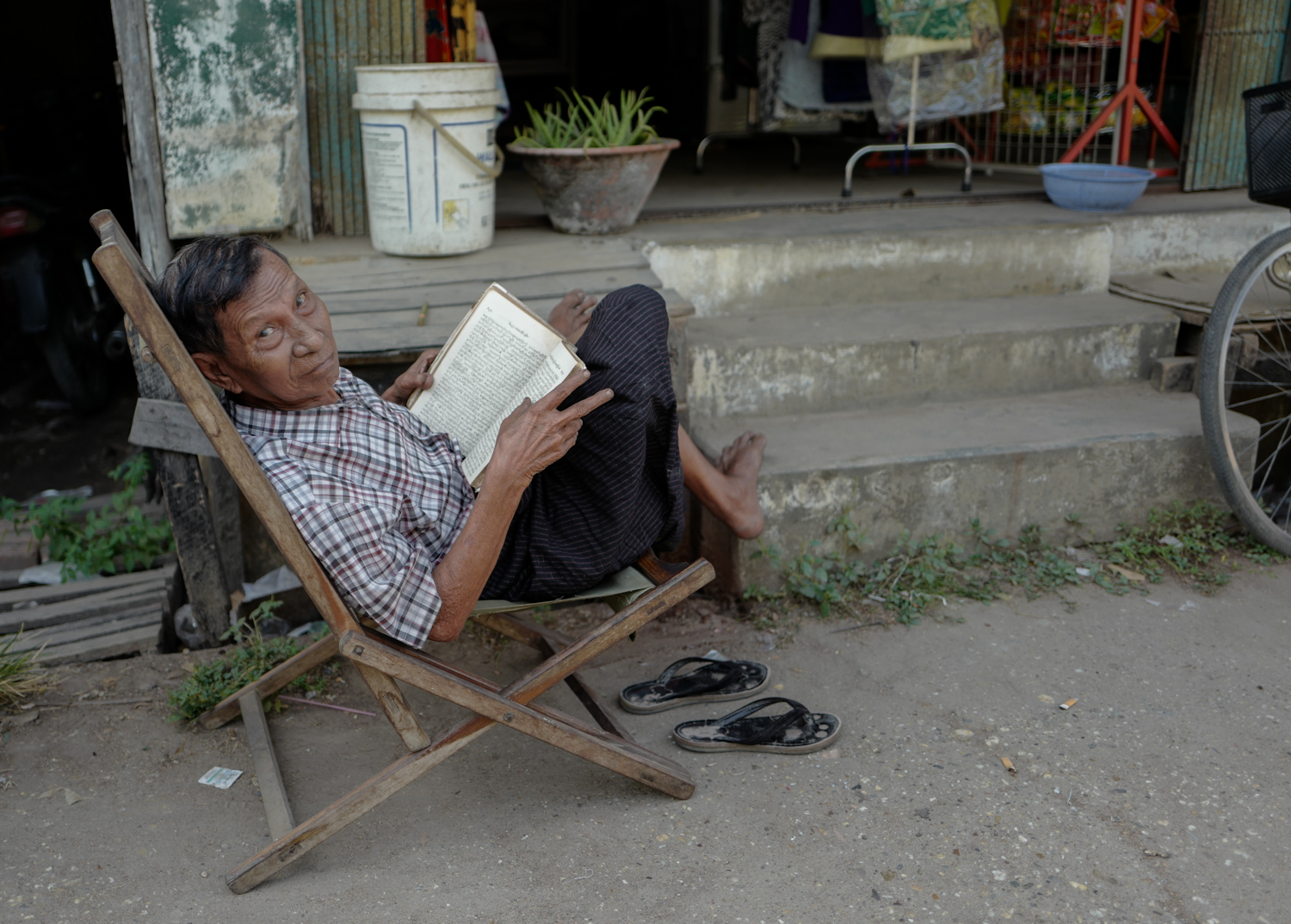



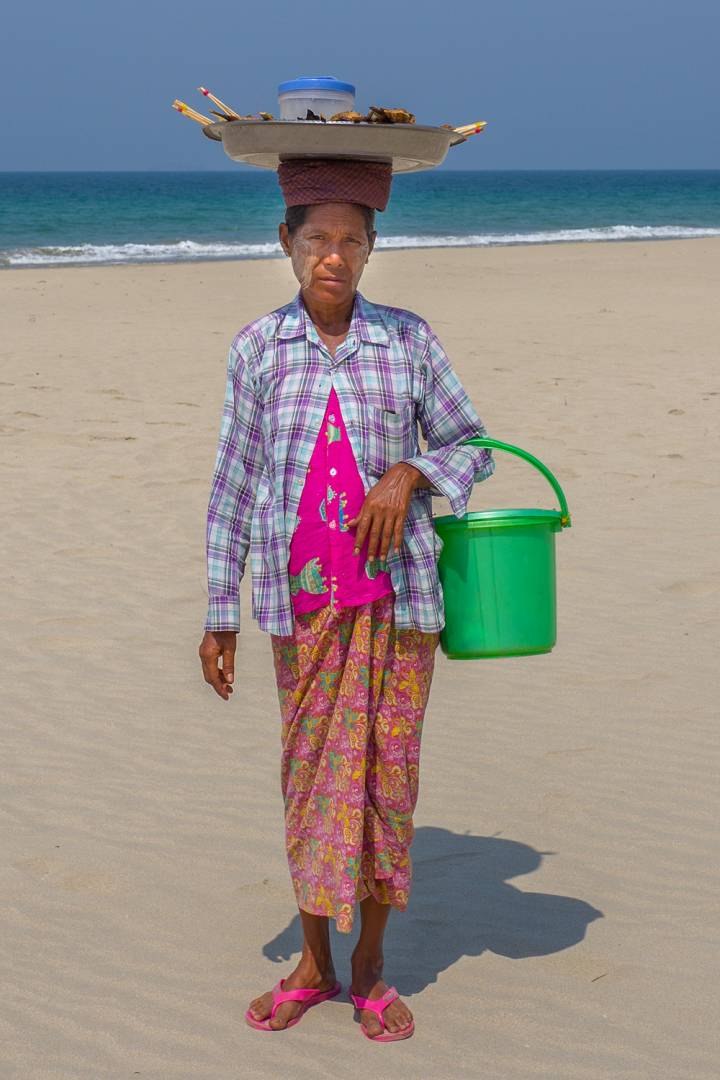
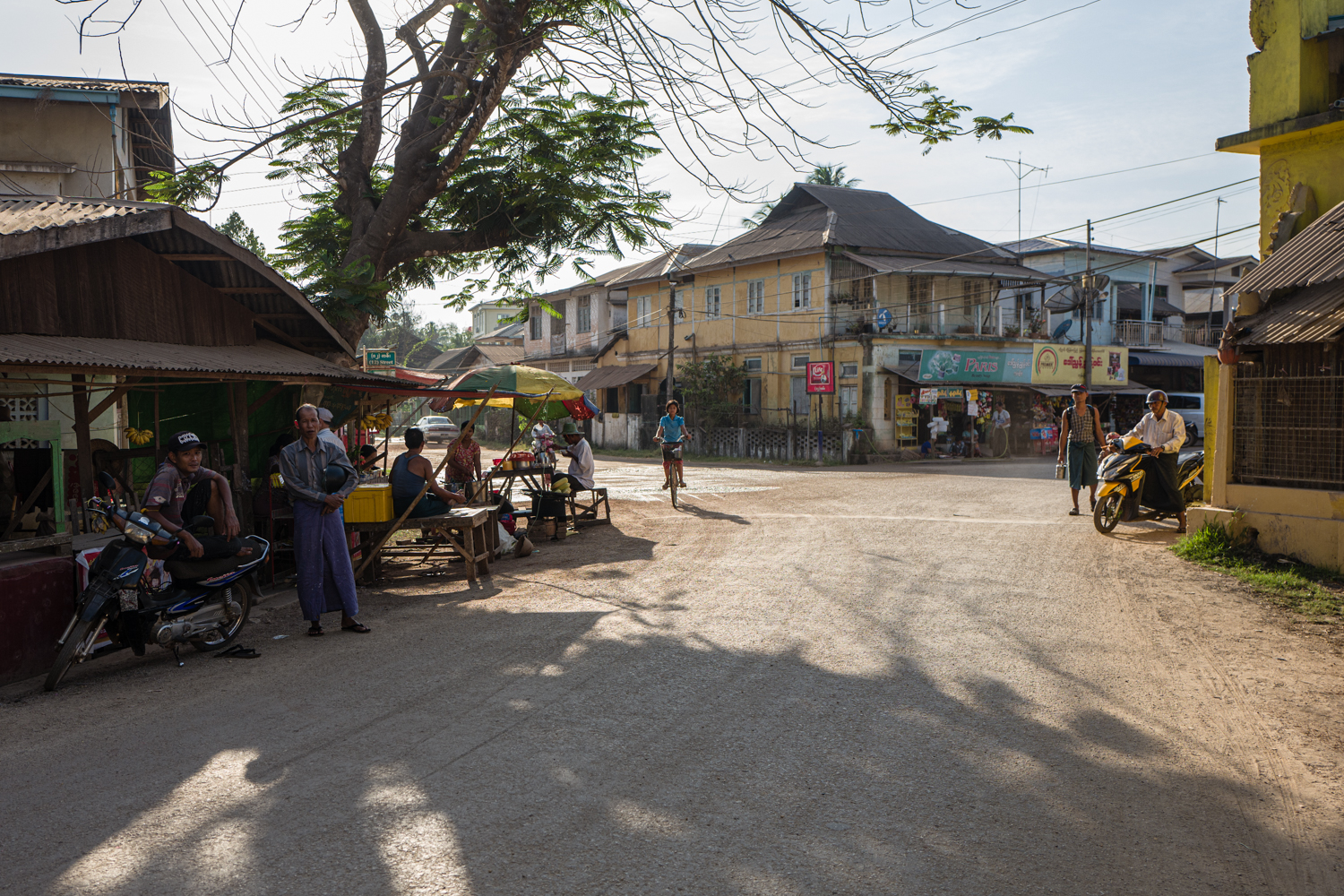
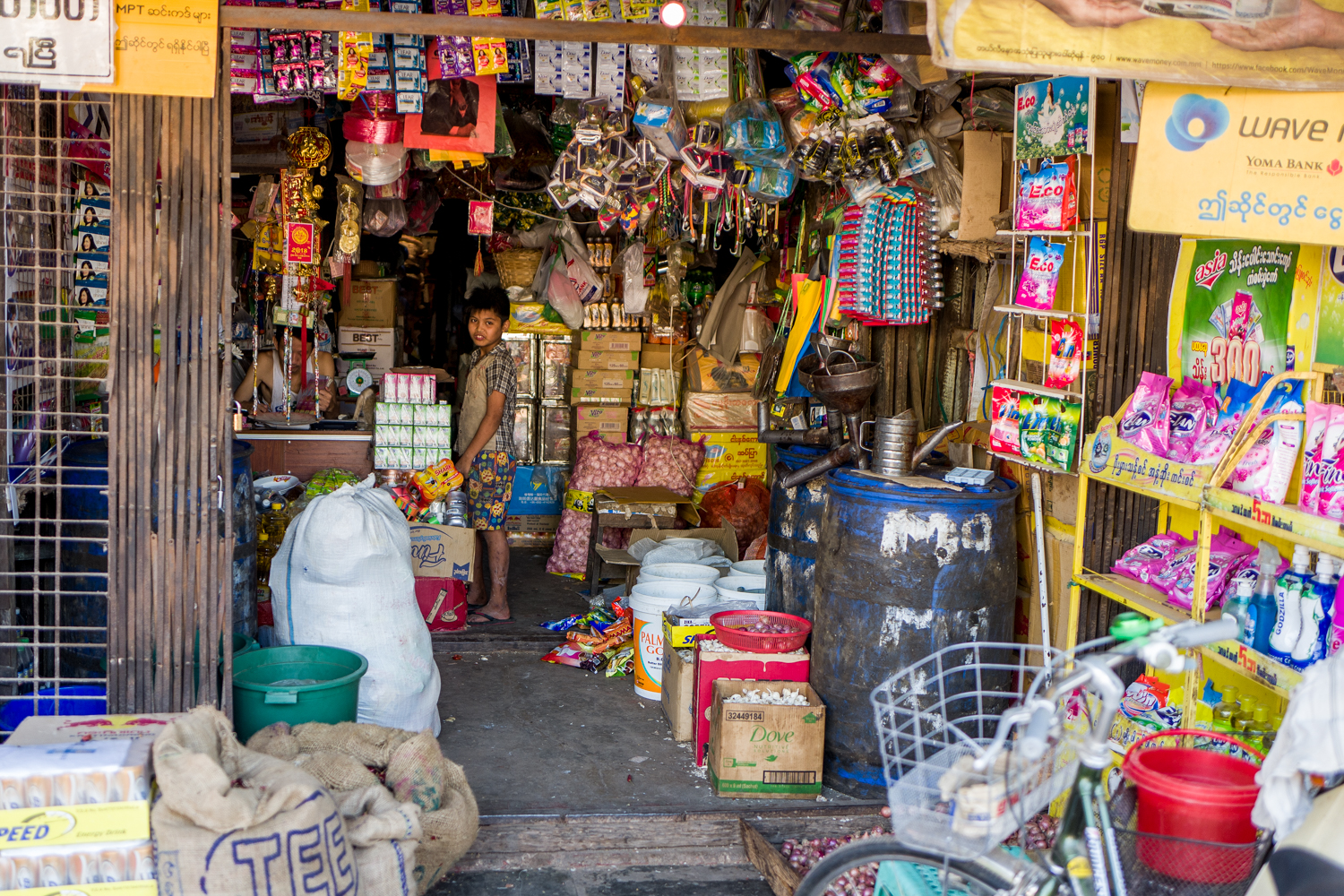
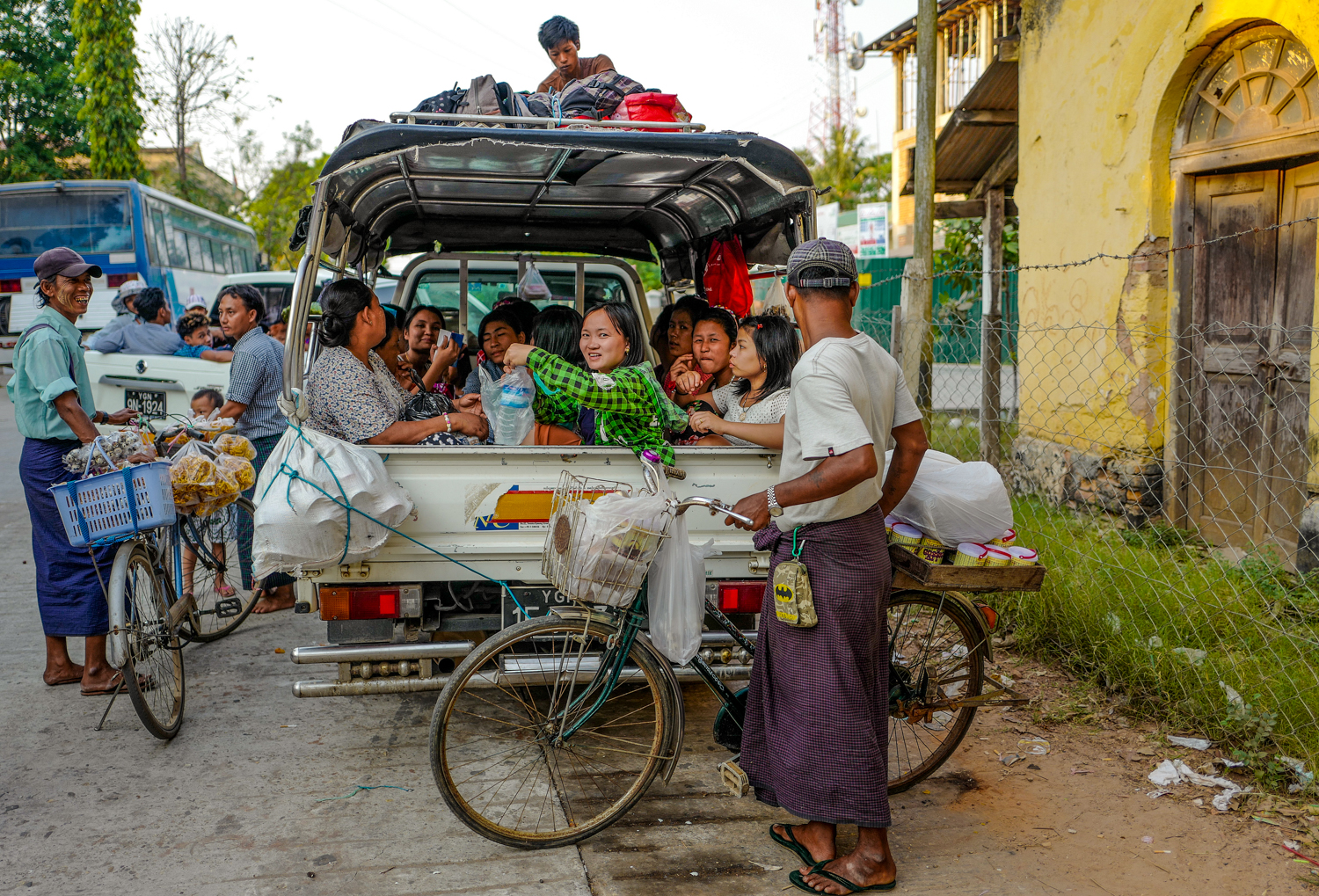

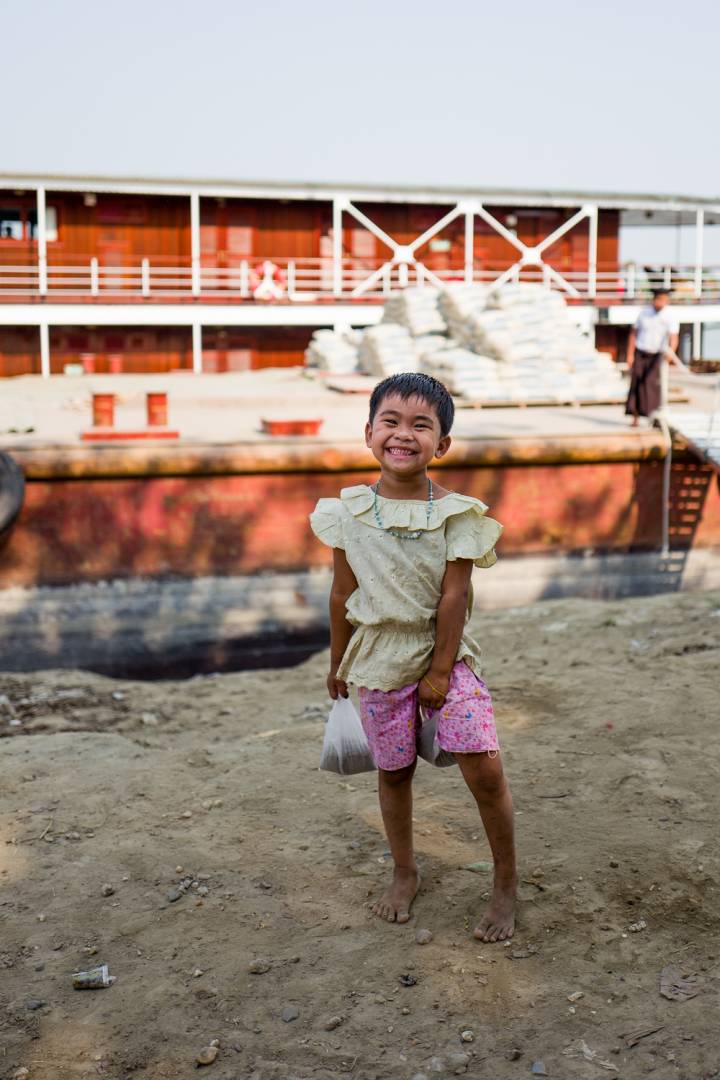










Wonderful photographs and terrific smiling faces. By the way, how’d you like the food? Khow suey is very popular here in India, but like most culinary exports probably the original is very different. Some guys I know from my trips to Manipur have now extended their battlefield tours to cover Burma. (http://battleofimphal.com/tours/burmamyanmar-tours). Hope you’re able to go back again.
BTW John, your April 10 posting on Rolling Road is very pointed and poignant. The content and photography are superb. I returned from the USA just three weeks ago and I saw much in the same vein. Well done!
Many thanks, Richard. I have received a few comments on those photos which seem to have struck a chord. There will be more in a similar vein soon.
As I’ve said to you before, John, I find your argument for going to Myanmar entirely convincing and principled, but it was very good to be allowed to share your thinking on that point. Others would of course take a different view, but what you say rings true.
I continue to be amazed at your creative handling of 28mm (and 35 with the X1). I can’t seem to get my eye round those focal lengths, but I keep looking at your photos and thinking one day I might learn!
Wonderful, John! Beautiful photos and an excellent write up. The people seem to respond perfectly for you and your camera.
That’s the sort of trip that I’d love to make – get off the tourist paths and see a country and culture for what it really is.
Regards , good health and thanks.
Jason.
Hi John,
Thank you for sharing this with us, I heard many things about Burma during my childhood. Your images show a wonderfully colour rich country with people who look so happy, and comfortable being in front of your lens.
Must confess, it is very confusing when Mr X1 becomes Mr Q1, whatever next.
Keep Safe folks.
Dave
Thanks John, a really interesting article and great pictures.
Thank you for the informative Story and the nice pictures.
Thank you John for this wonderful article which reminds me of the kindness of the Burmese people when my wife and I were there in 2016. Yangon traffic was hectic but it was not the modern city you mention in your article. Most buildings, save a few modern hotels, were pretty derelict at that time as well and each area of town looked like villages within the city boundaries. I remember the hope the Burmese had in the LND as we went one month before the election. You have made your Q shine and captured the kindness of the Burmese. The last two images are my favorites. Thanks for sharing
Thank you John. I very much enjoyed this story. Myanmar has always fascinated me and I hope some day to visit there. Your explanation of the country’s history and the current level of development is very well done and the photos are superb. The last two portraits are wonderful character studies and the street scene just before them is an excellent use of light an shadow. Thank you again.
The photo I remember most was the wagon in the dust filled am sunlight and you talking about tube protect sensor from dust, that what started my LEICA journey. Because of that I am forever grateful, don’t read mans blog or reviews anymore, because it all leads to One road, Macfilos, which is like ONE RING TO RULE THEM ALL! Sorry JRRT ALWAYS WANTED TO USE THAT LINE.